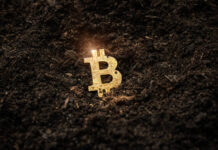Markets
A bullish wave swept across markets today, extending yesterday’s constructive start of the new month. Investor focus shifted away from Reddit’s retail army after all of their targeted assets, including silver (-5%), show signs of fatigue. Instead, markets eye the ongoing fiscal stimulus talks and the Democrat’s ambition to go for a large relief bill, with or without (via a reconciliation bill) the support of Republicans. At the same time, news on the vaccine front is supportive to global sentiment as well. The US has effectively vaccinated more US residents than have tested positive. The milestone comes with the US coronacurve showing clear signs of topping out. On the data front, economic activity in the euro zone contracted less than feared in the final quarter of 2020. GDP printed at -0.7% q/q vs. -0.9% expected, putting the euro area economy 5.1% below the level of 2019Q4. The Q4 growth figure is merely the confirmation of what we have seen in many individual countries. Impacts on markets was thus limited. A buoyant market sentiment causes equities to trade well in the green (up to +1.5% in Europe), oil prices to jump (Brent takes out $57 p/b, nearing $58) and core bond yield curves to bear steepen. US yields advance 1.6 bps (5-yr) to 2.3 bps (30-yr) as both real yields and inflation expectations rise. The 5-yr/30-yr spread (1.44%), regarded as markets’ assessment of the economy going forward, reaches the highest level since 2016. German yield gains vary from 1.7 bps (5-yr) to 3.3 bps (30-yr). Peripheral yield spreads tighten with Greece (-3 bps) outperforming. The Belgium debt agency successfully sold 5 billion euros via a new syndicated June 2071 government bond sale. Order books closed in excess of 53 billion for bonds with a spread set 7 bps (guidance: OLO + 9 bps area) higher above the yield of the June 2066 OLO, the now-former longest-dated bond on the Belgian curve.
On currency markets, the dollar continued to defy the traditional risk-on correlation and gains against most peers, except for oil and other commodity currencies (e.g. NOK, NZD and CAD). The bottoming out process in US real yields is a support for the greenback. EUR/USD, currently trading at 1.204, fell below intermediate support at around 1.206 to touch an intraday low around 1.203. The move coincided with the trade-weighted dollar (DXY, 91.09) taking out resistance at the 91 handle. USD/JPY tentatively conquers 105. Follow-through gains for the dollar are limited though, so all of the technical breaks still have to be confirmed. Sterling’s trading pattern looks very similar to yesterday’s. EUR/GBP tested the 0.88 area, down from 0.882 at the opening, before paring losses to trade more or less unchanged. Pound momentum stays positive nevertheless as a nice downward EUR/GBP trend channel is developing.
News Headlines
Czech GDP grew 0.3% Q/Q in Q4 of last year. As was the case for several other European countries, Czech Q4 growth beat expectations for a contraction of about 2.5% Q/Q. Still, activity was still 5.0% below the comparable level in 2019. The data suggest that especially the Czech manufacturing sector remains resilient despite the current lockdown measures. The stronger than expected Q4 growth is also interesting input for the CNB policy meeting on Thursday. The bank intends to hike its policy rate later this year. The better than expected GDP release accelerated recent CZK-rally and pushed EUR/CZK decisively below the key 26.00 support (currently 25.88).
After higher than expected January CPI readings published in Germany and Spain last week, the preliminary release of French HICP inflation also printed higher than expected. French inflation rose 0.3% M/M and 0.8% Y/Y, while only a rise to 0.5% Y/Y (from 0.0%) was expected. Prices for energy (1.7%) and food (0.4%), tobacco (0.3%) and services (0.2%) all contributed to the monthly price rise. The EMU flash CPI data will be published tomorrow.













